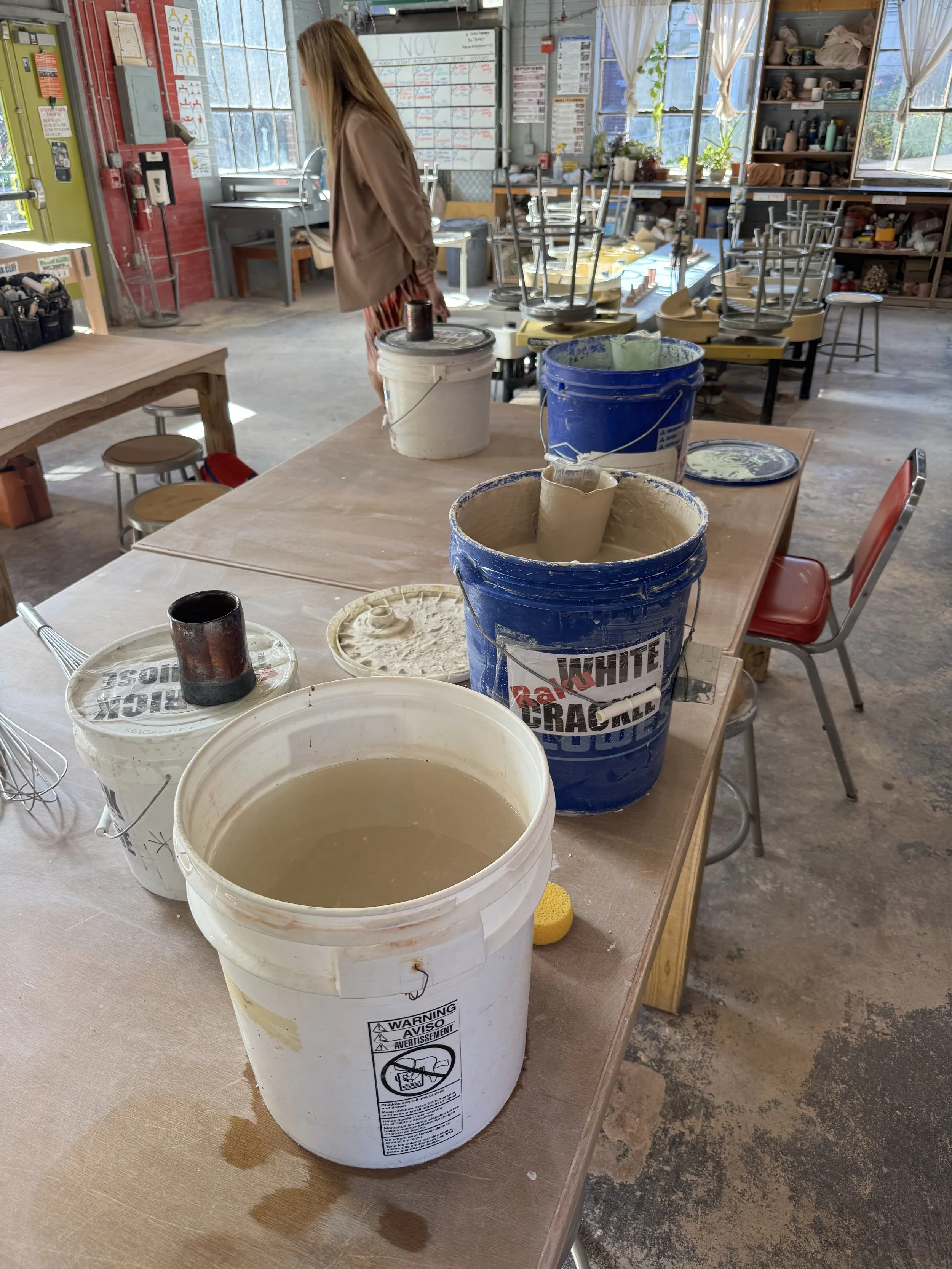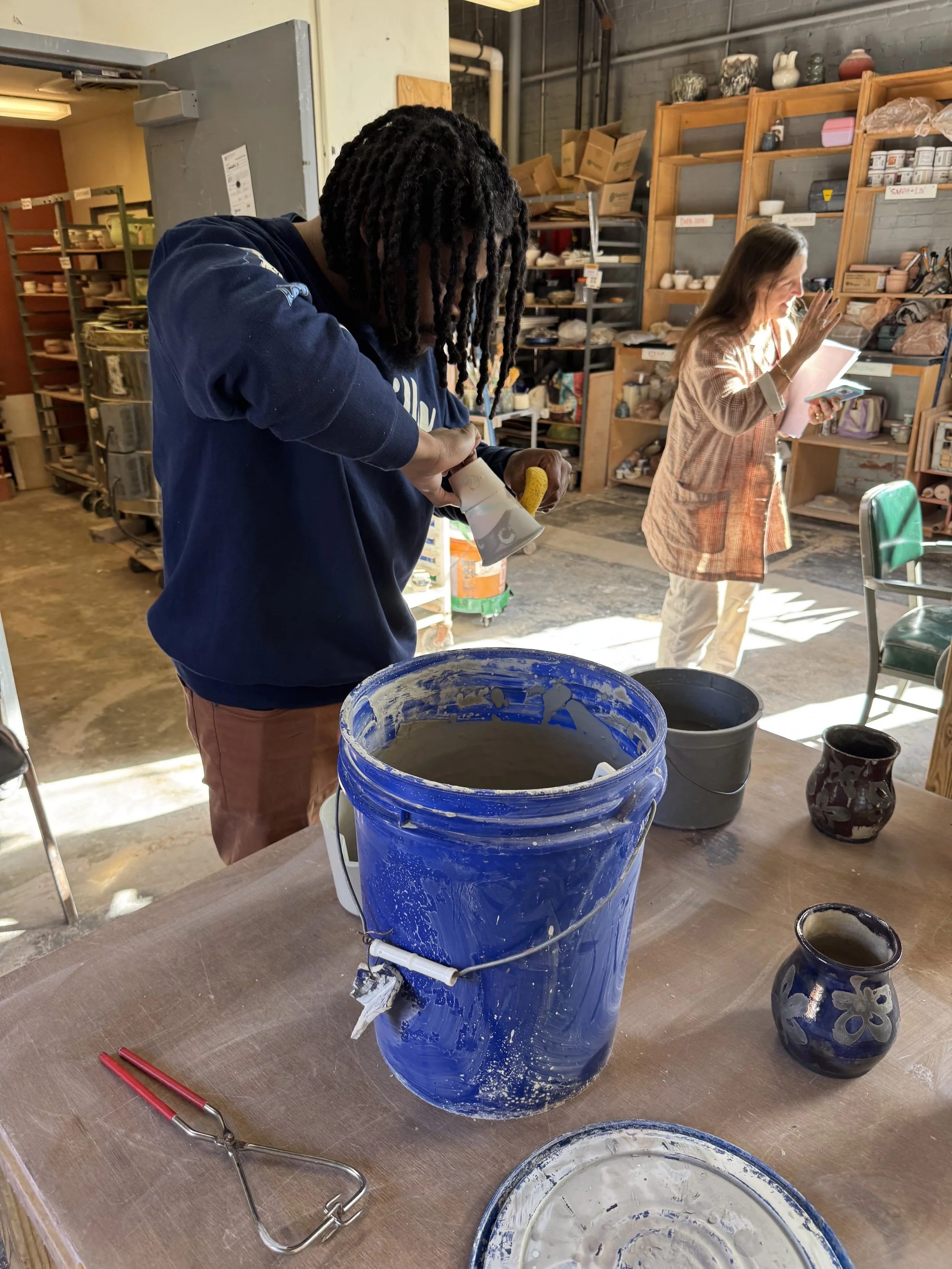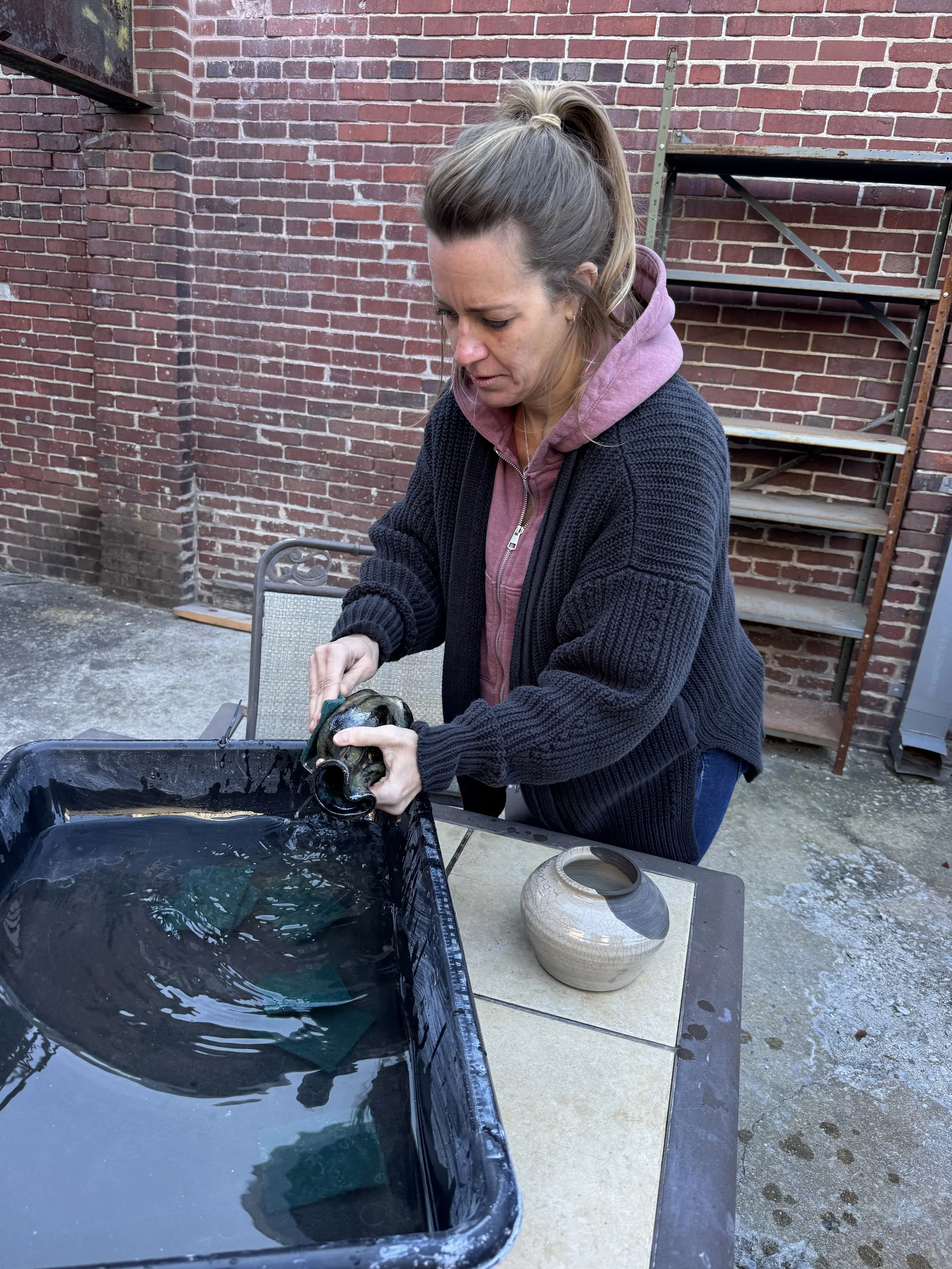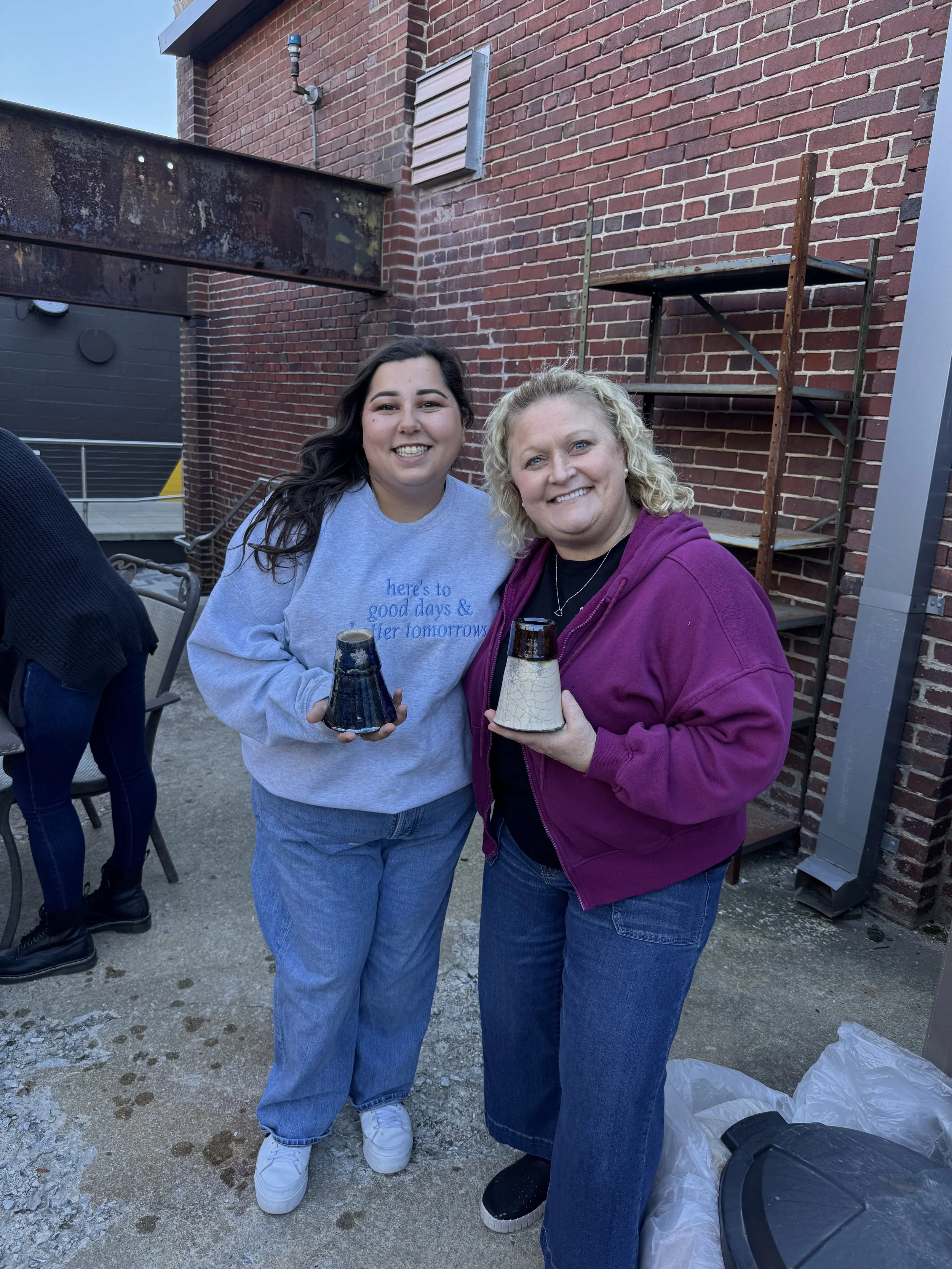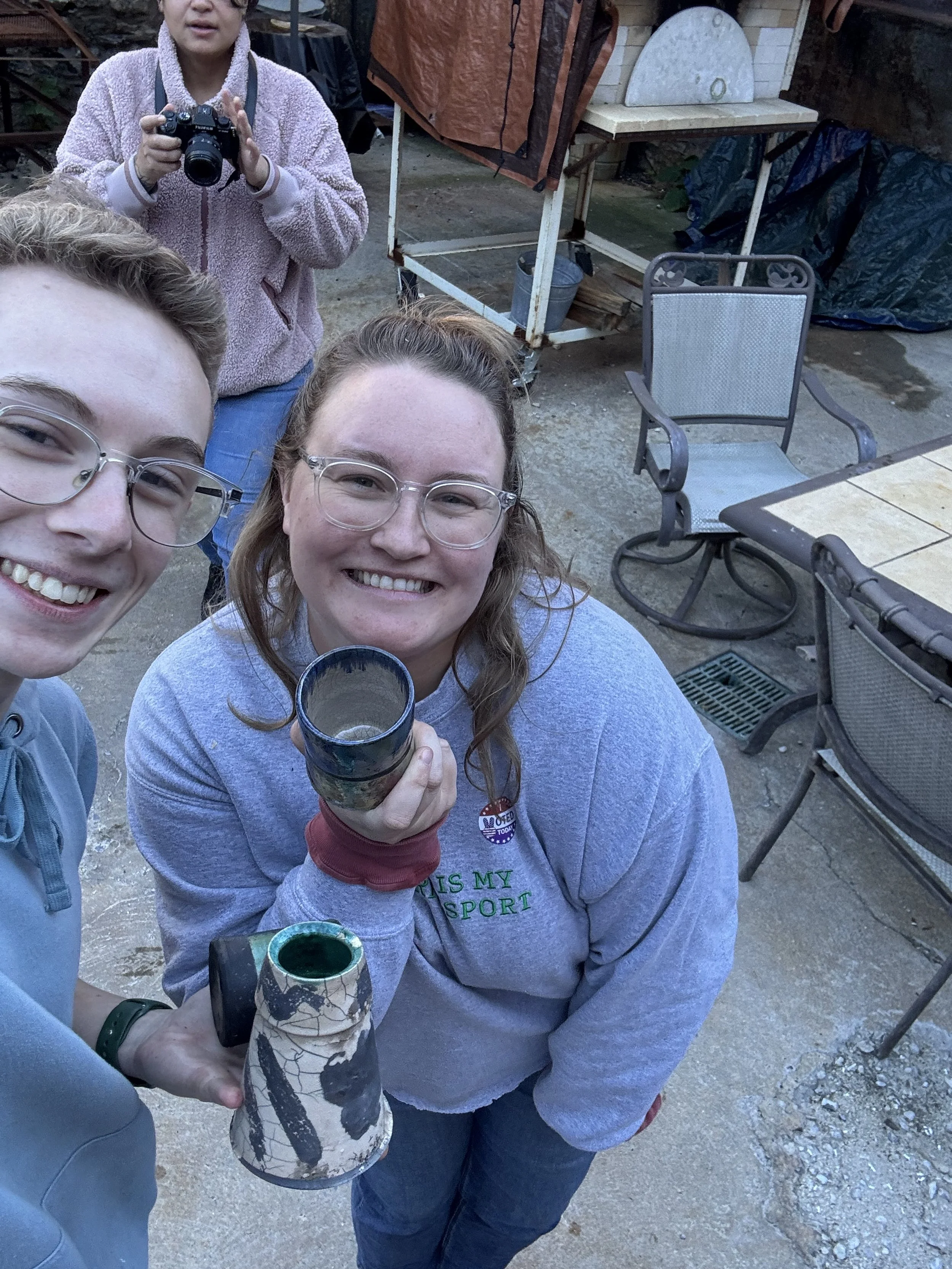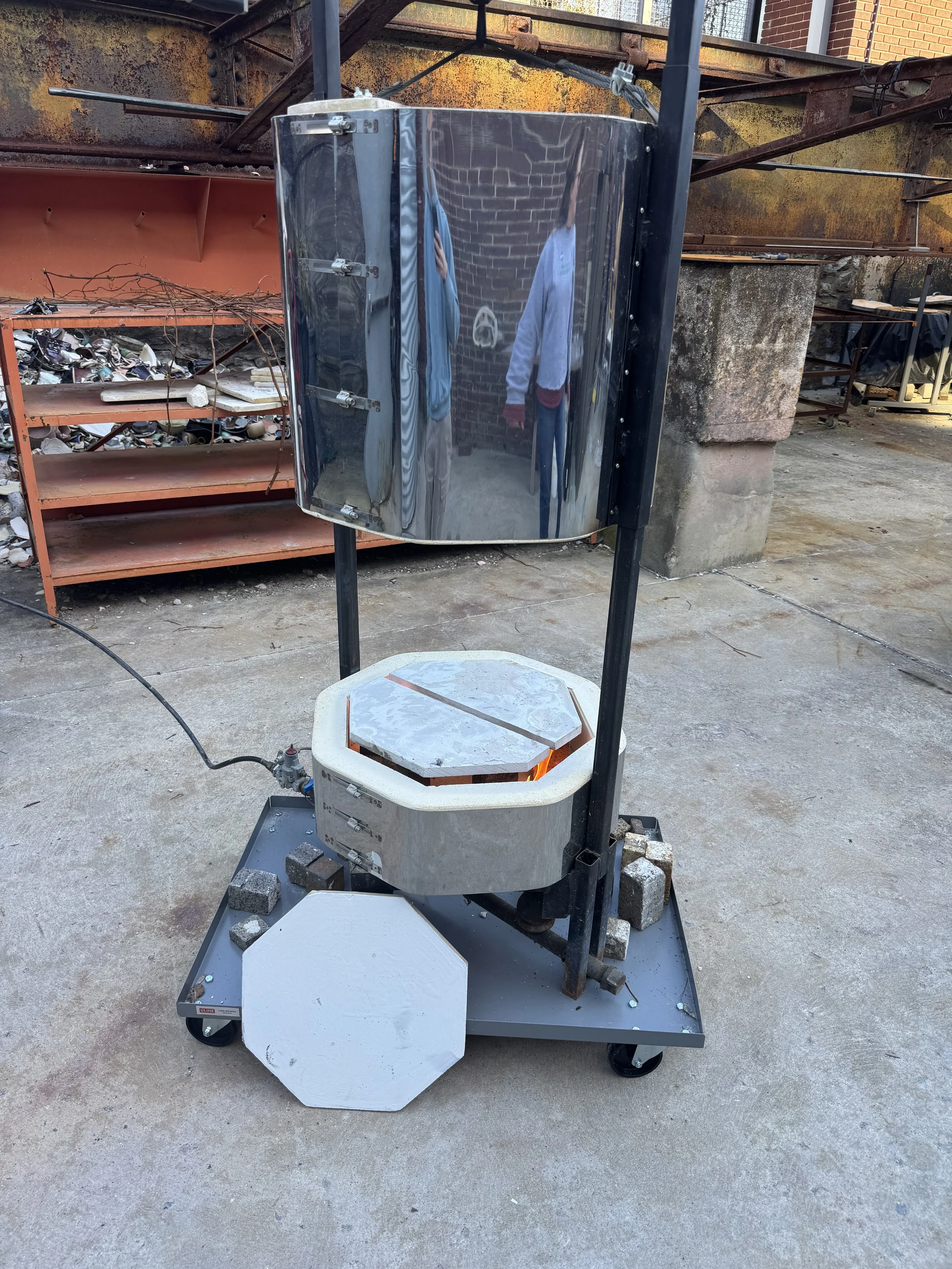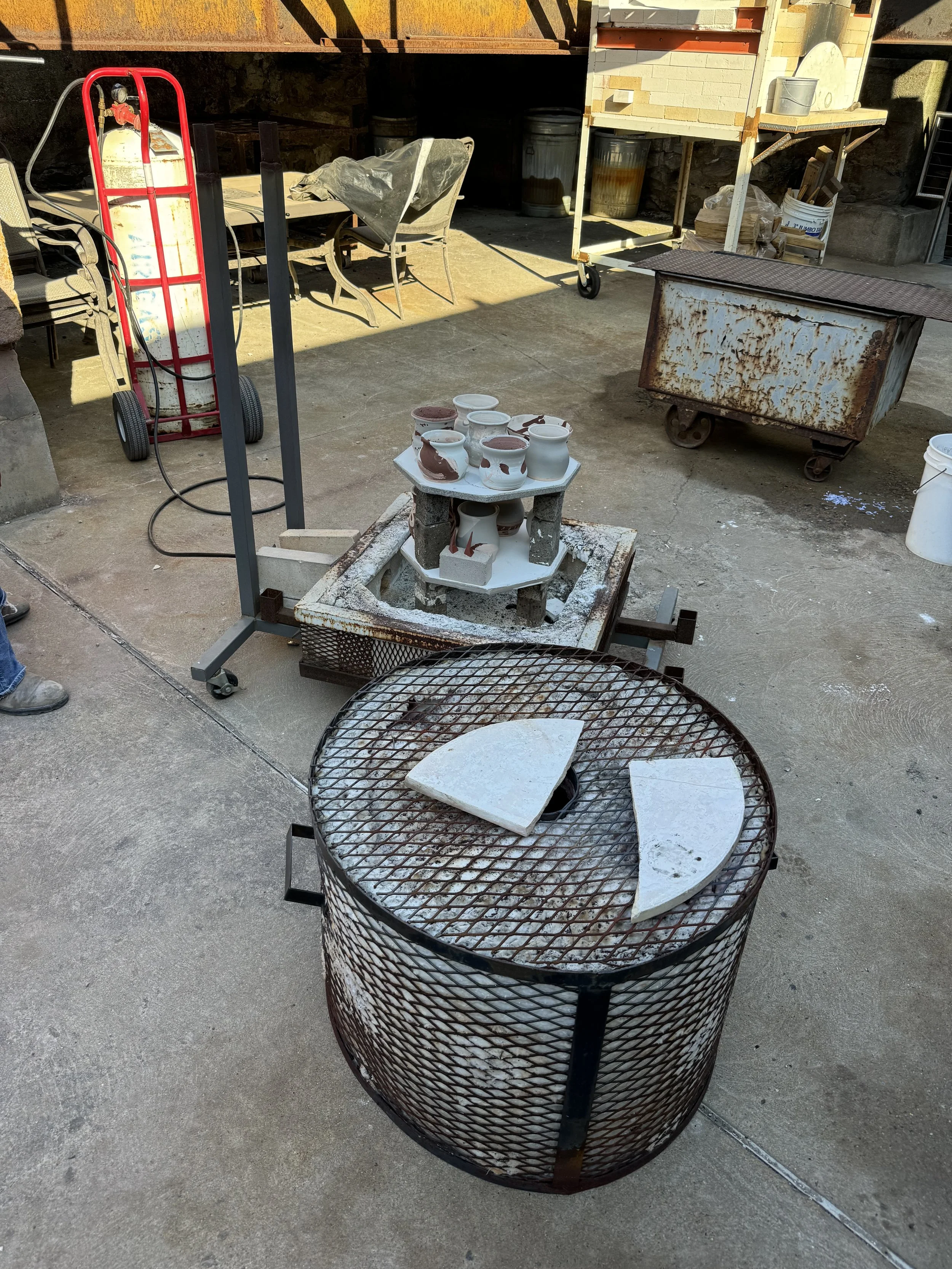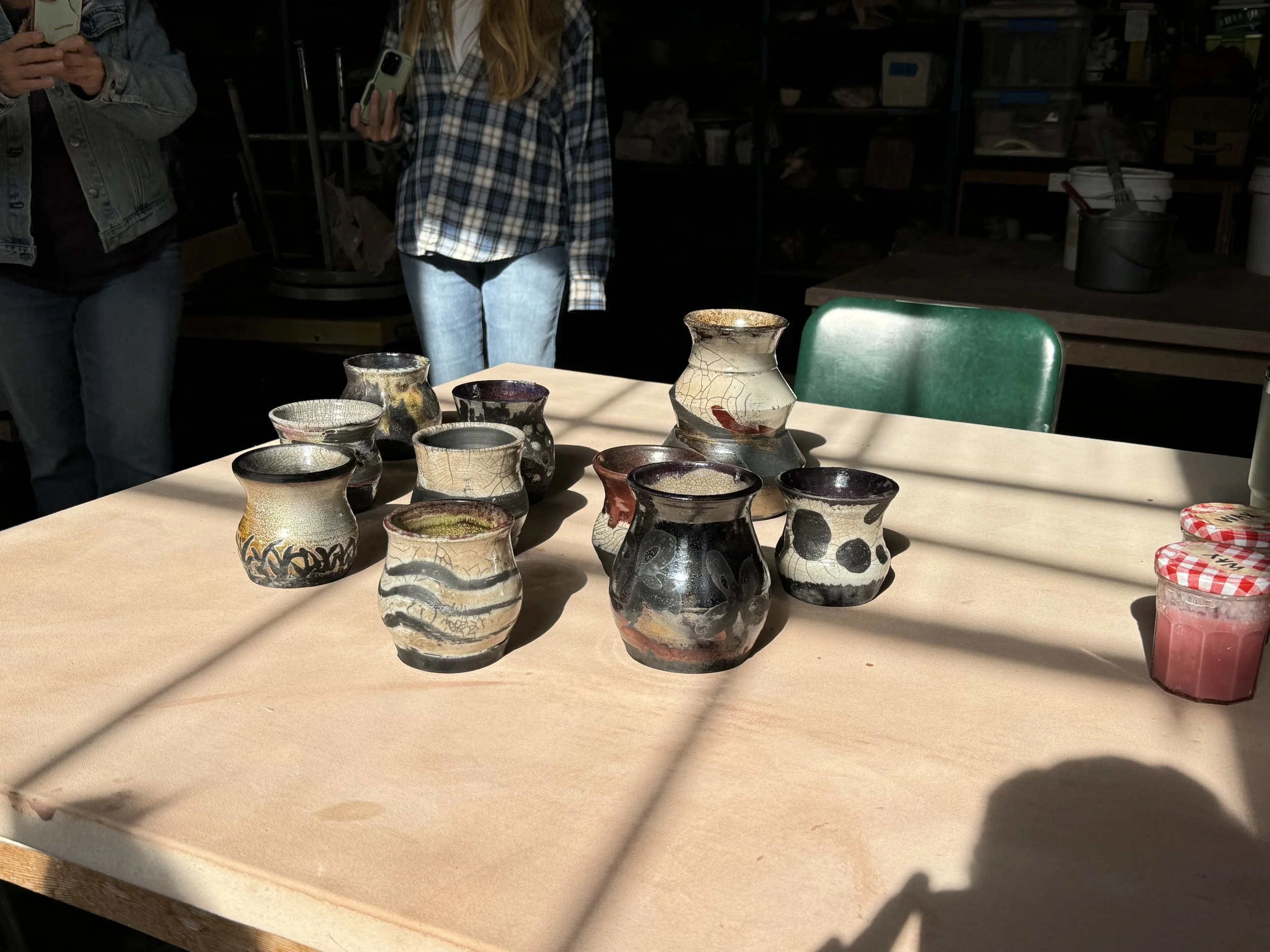Raku Firing Workshop - Lesson Plan (Community Art Center, Adults)
Grade/Age Level:
Adults (Community Art Center Workshop – Beginner Level)
Big Idea:
Art can teach us to find beauty in unpredictability and transformation.
Goals/Objectives:
By the end of this workshop, students will be able to:
Apply basic glazing techniques (brushing, dipping, overlapping) to create intentional surface designs on bisque-fired pottery.
Explain how the Raku firing process creates unique and unpredictable surface effects.
Reflect on how unpredictability in art can connect to experiences of change and acceptance in life.
Actions (Lesson Flow):
Beginning:
Introduce the Raku process and its origins in Japanese ceramics, emphasizing transformation and impermanence.
Discuss the Big Idea and invite students to think about what it means to create something you can’t fully control.
Demonstrate glazing techniques: dipping, brushing, overlapping colors, and using wax resist for design.
Middle:
Students glaze their pre-bisqued pots, experimenting with color layering and surface design.
Instructor provides guidance on technique and discusses how glaze thickness and overlap can impact results.
Once all pieces are glazed, load the kiln as a group.
Explain the rapid firing process and why special Raku clay is used to prevent thermal shock.
Observe the firing process, discussing visible changes and anticipation as part of the experience.
End:
After firing, students help place pots into the reduction chambers and observe how smoke, combustion, and cooling affect surface results.
Facilitate a short reflection discussion:
What surprised you about your results?
What did you learn from something you couldn’t control?
How does this connect to creativity—or even life—outside the studio?
Display finished pots together and celebrate their uniqueness.
Assessment:
Observation of student engagement and understanding during glazing and discussion.
Informal reflection responses during the final group conversation.
Visual assessment of glazing application and evidence of experimentation.
Preparation/Environment:
Pre-bisque pots (Raku clay)
Variety of Raku glazes
Wax resist, brushes, tongs, glov,
Raku kiln, propane, reduction chambers with combustibles (sawdust, newspaper, etc.)
Fire safety materials and ventilation setup (outdoors)
Exemplar:
Instructor-created Raku pot demonstrating glaze overlap, wax resist pattern, and reduction effects.

